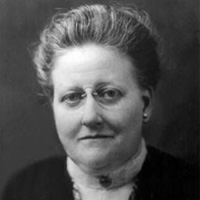Amy Lowell - Biography and Works
Amy Lowell was one of the most important Imagists in the World War I period. She was born as the daughter to the family of father, Augustus Lowell and mother Katherine B Lowell. Her identity ranges from a poet to the propagandist, translator, lecturer, biographer, and critic. Amy Lowell was a woman of great energy and good sense of humor. She created an unusual image for herself by always appearing in public with a cigar in her mouth.

Amy Lowell (1874-1925)
She quickly took the leadership of the Imagist movement away from Ezra Pound. After that, Pound called the Imagists movement ‘the Amygists’. She was awarded with the most prestigious award the Pulitzer Prize for poetry in 1926 for her poetry collection What’s O’Clock?, that was posthumously published.
She did not get any formal education instead she was self-educated in the library at Sevenels. As she was a great admirer of John Keats, she collected and studied his papers and poems. She started her career as a poet in her 30s when she formally published her first poem ‘Fixed Idea’ in the Atlantic in the year 1910. She became a prolific writer as she wrote and published over 650 poems just in her short period of time. Her most famous poem is her ‘Patterns’ (1915). It ends with her remembering her lover, who had died in the war.
She took much interest in art and with the help of Ezra Pound she was influenced by the cultures of far East. Some of her works are inclined towards the rhythms of Japanese visual art. Her good try to the Japanese Haiku poetry became a trend setter for the time being. She even translated some of the Chinese poems which were well praised by the critics. Her talents in literary criticism is well proved by the publication of 1915's Six French Poets: Studies in contemporary Literature, and Tendencies in Modern American Poetry, published in 1917. She wrote a lighthearted satire to A Fable for Critic by James Russell Lowell in her A Critical Fable in 1922. Lowell dedicated many romantic poems to her secretary Ada Dwyer Russell such as "The Temple," "Anticipation," and "The Taxi."
In her later life, she kept herself busy in encouraging the new poets by lecturing, providing more opportunities, seeking financial support, giving positive feedback, and recommending their works to others. During 1920s, her health condition started to deteriorate and she suffered from many hernia attacks. In 1925, she died of a stroke when she rose from the bed against the medical advice.
